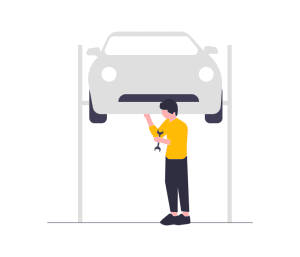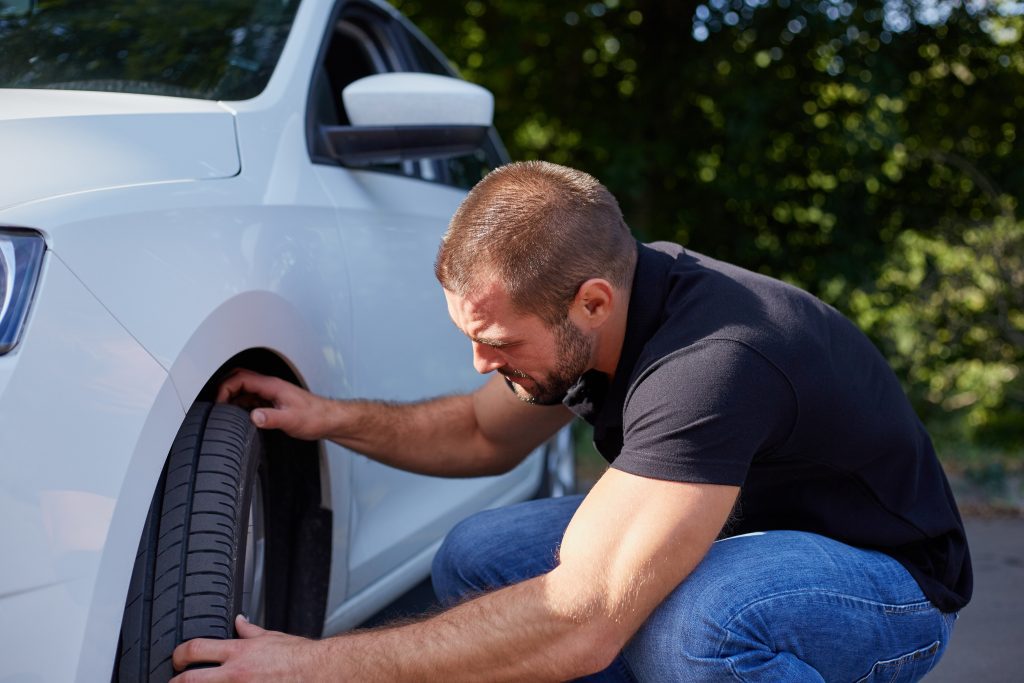When you’re a driver there are so many things to think about when you’re on the road but many of us are guilty of jumping in the car and getting to our destination without much thought about the car we’re driving. The car maintenance tips below are especially useful for young drivers as they can be good to get into the habit of doing from the start of your driving experience. Taking a small amount of time out of your week to perform basic car maintenance checks can help save you time, and money and also prolong the lifespan of your vehicle! Things like low tyre pressure or oil levels can seriously be affecting your driving and also be wasting fuel. We believe all drivers should be aware of the below car maintenance tips and put them into practice.
How to do basic car maintenance at home:
Each car in the UK will require a valid MOT certificate in place to be legally driven on the roads and it is also recommended you get your car serviced each year or every 1,000 miles. Both servicing and MOTs are very important for keeping your car in its best condition but the top 10 basic car maintenance tips below can also help to improve the lifespan and depreciation rate of your car too.
1. Check and top up your engine oil.
Engine oil lubricates the moving parts in the engine and helps to reduce damage to the engine so it’s really important that you keep your engine oil levels topped up. You can check your engine oil by opening your bonnet and locating the engine oil dipstick. Take the dipstick out and wipe away any excess oil to reveal the minimum and maximum oil levels marked on the dipstick. Simply pop the dipstick back in and then out again and see where your oil levels are on the dipstick. If it’s less than halfway, you should consider topping up your oil levels. If your oil is over halfway, you should be ok until you check your vehicle over again.

2. Pump up your tyres
When you check your tyres, you check for two things. Firstly, your tyres are at the recommended tyre pressure. You can locate your tyre pressure on the inside of the driver’s side door or within your owner’s manual. You should then inflate or deflate your tyre pressure to the required PSI to maximise performance.
Secondly, you should also check the tyre tread depth. The legal tyre tread depth in the UK is currently 1.6mm but anything below 3mm can greatly increase stopping distances which can be very dangerous. To check your tyre tread depth, you can use a 20p coin and insert it into the tread groove. If you can’t see the outer band on the 20p when it’s inserted into the tyre, your tyre tread should be fine. If you can, it can mean your trees are too worn and you should seek help from a mechanic to replace them.
3. Keep on top of your coolant levels.
Engine coolant or anti-freeze coolant is used to stop your engine from overheating and is really important. Always ensure the engine is cool before you check your coolant levels and you can locate the coolant filler cap under the bonnet or refer to your vehicle handbook if you’re unsure where it is. The side of the coolant tank will display a minimum and maximum mark. If you need to top up the coolant, you can do this at home by purchasing the correct coolant from a trusted retailer and filling it up the max.
4. Make sure all your lights are working.
It is a legal requirement in the UK that all your cars lights need to be in good working order., If not, it can land you with a fixed penalty notice of around £200. One of the easiest car maintenance checks you can do is to make sure all your lights are working correctly. Simply jump in the vehicle when it’s stationary and get someone to stand outside of the vehicle and verify whether all your lights are working when you operate them. This can include, headlights, rear lights, indicators, brake lights and fog lights. If you don’t have anyone to help you, you can park near a shop window and use the reflection to see if your lights are working.
How to save money on car costs
5. Change your wipers.
Worn windscreen wipers can affect your ability to see when driving in poor weather conditions, damage your windscreen and they’re also one of the most common reasons for MOT failure. There are a number of tell-tale signs that indicate your wipes need changing which can include streaking, skipping, squeaking or smearing whilst in operation. You can easily change your windscreen wipers at home by purchasing the correct wipers for your vehicle, this can be found in your owner’s manual or on the inside of the old wiper and simply swap them over whilst stationary.
6. Check the shock absorbers.
Another basic car maintenance check that drivers overlook is the shock absorbers. Your shock absorbers are used to absorb the impact of potholes or bumps in the road. You can check your shock absorbers by parking up your car and simply pushing on the front end of the vehicle a few times. The car should rise back up and then be still, if not and the car wobbles on its way back up, it can indicate that the shock absorbers need replacing. Replacing your shock absorbers is a quick job to do but should only be carried out yourself if you are confident in your ability. If not, it can be much easier (and safer) to get a verified mechanic to do this on your behalf.
Find out how to claim pothole damage.
7. Top up your screen wash levels.
It can also be a good idea to keep on top of your windscreen wash to ensure you have a clear view of the road at all times. You can do this by lifting the bonnet and checking what your current levels are. Modern cars can also use a dashboard warning light to let you know when the screenwash levels are low. You can buy some screenwash from your local garage or supermarket and locate the windscreen wash tank underneath the bonnet and top it up to the maximum level.
8. Test your brakes.

We don’t need to tell you that your brakes are one of the most important elements of a car but that’s why it’s so important that they are in good working order. You can check the working order of your brakes by driving to an area with no other traffic around, getting up to a speed of around 30mph and then pressing the brake pedal fast. The car should react straightaway without any juddering or delays. This is also a good way of testing your ability to perform an emergency stop, which you may not have done since passing your driving test.
You can also check your brake pads at home by visibly identifying any common car faults on most car models. Simply look straight through the spokes of the wheel and you should be able to see the outer pad against the brake disk. There should be at least 3mm of brake pad visible and if not, your brake pads may need replacing as they are too worn.
9. Give it a good clean.
You’d be surprised how many drivers overlook a simple spring clean of their car as a basic maintenance tip! Not only will your car look and feel brand new but having a car that is overfilled with excess rubbish or equipment can be costing you fuel! Give your car a quick empty of anything you don’t need and stick to an essential emergency kit only which you may need in the event of a car breakdown and give it a once over with the hoover and you’re good to go!
Free finance quote
Get a free finance quote today and you could be driving your next car in a matter of days! Choose from 100s of cars from reputable dealers in the UK with an affordable finance deal to match!

